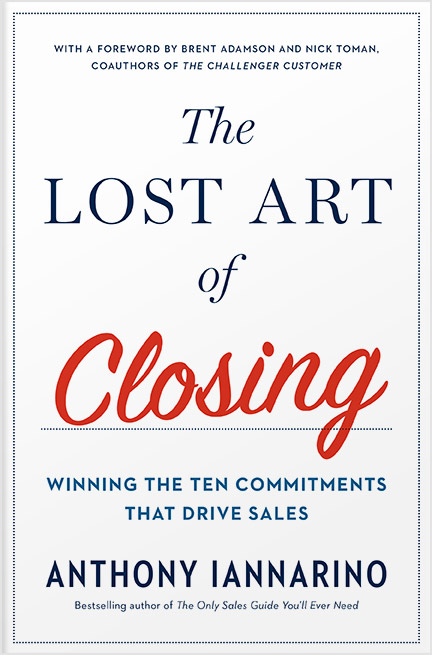On one end of the spectrum, there are those who believe they should passively wait for a Request for Proposal as the single best way to acquire clients. On the other side, some refuse to respond to RFPs altogether, believing it is a waste of their time unless they helped write it. Both of these approaches are problematic, as the first relies too heavily on one way of acquiring opportunities and the second misses opportunities they could win. Of the two, those who dismiss RFPs out of hand are more interesting, and it allows us to explore a different strategy.
Arm’s Length for Some
If one is going to describe the problems with requests for proposal, there is no better place to start than with the arm’s length nature of the process, pretending to be an unbiased, neutral process, where all are given a fair opportunity to compete. The whole idea of selling is to create a preference to work with you, your company, and your solutions, an idea that conflicts with the idea of being arm’s length—especially when two groups of people are going to need to work together for three years. It’s a sort of arranged marriage based on factors that often have little to do with success.
There are some competitors with an advantage in these contests. The incumbent has the benefit of past performance, relationships throughout the company, and the knowledge and experience that one could only gain by working with the client. But they are not the only competitor with advantages. Those competitors who made it to the presentation stage in the last contest all benefit from having been in the room and having met the decision-makers, a group about which we’ll have more to say later. Finally, large, well-financed competitors tend to dominate the decision, as “Nobody ever got fired for hiring IBM.”
With exceptions in some verticals where the RFP is extraordinarily strategic, most are transactional, mostly consisting of questions to which the respondent may answer that they agree or disagree to terms, disagreeing disqualifying them from being considered. The process typically requires that all questions be submitted in writing by a specific date, with the very short responses lacking any context provided to all who agreed to participate. If you have had no meeting and know no one in the company, it’s hard to imagine why you would respond, your chance of winning being exceedingly low.
All this being true, there are still strategies that may make it worth completing the RFP and competing for your prospective client’s business.
Your RFP Is Broken
If you want to break the arm’s length nature of the RFP, there are strategies for doing so. If you want a competitive advantage, you can create one by informing your client that their RFP is broken. To execute this strategy effectively, you have to read the RFP from cover to cover, and you have to identify several areas where there is a potential mistake, like a question that prevents you from sharing a new and better way of doing something, or some assumption that the client made that is at odds with reality, something that will harm them later.
Calling and telling the person responsible for the RFP that there are areas where they should be concerned about the results they’ll get later is enough to get you the attention you need. Not that this is a legal issue, but the standard of being charged with negligence begins with the idea that one “knew, or should have known.” Once a person hears what you say, they cannot un-hear it. You have now created a real concern, and by doing so, established yourself as someone who may know something useful. Your goal here is to make it to the final round to present over the course of an hour or two, even though you should not present.
None of this guarantees you win. It does, however, get you known.
Don’t Present – Listen
When your prospective client gives you an hour to present, don’t spend your time “showing” and “telling,” even if they provided you with a template to follow. That template will require you talk about your company history (no one cares), your leadership team (still no one cares), and your solution (they already know what you do). Your contacts don’t know you, and you don’t know them, depriving you of any knowledge of what’s most important to them. More still, they want to work with someone who cares about what they want, their preferences, their specific challenges.
One way that you prove you care about what they want is by asking questions. In all cases, it is helpful for your contacts to see you listening and taking notes, proving that what they say is important to you, a sign that you might be interested in giving them what they need. Another way is using the conversation to execute The Commitment to Collaborate from The Lost Art of Closing, asking questions about their preferences around all the things that make up your solution.No more pushy sales tactics. The Lost Art of Closing shows you how to proactively lead your customer and close your sales. 
These strategies, like all others, works sometimes. Other times, it fails. If you are playing the long game, it’s an excellent strategy.
Winning Next Time
You may have noticed a particular pattern if you pay attention to RFPs and how buyers make decisions. The first RFP seems to favor the largest company in the space, that company seemingly being the safest choice. When the behemoth does what a behemoth does, cramming every client into their processes, the challenges often result in their being replaced by the second-largest company or at least one of the largest competitors. Only after a couple of significant players disappoint them do they start looking for a real partner, someone who will give them what they want or need.
Let’s say you make it to the presentation, you do your best, and you still lose. Once your dream client signs the contract with your competitor, the arm’s length process ends, and you are now free to start developing the relationships of value that will position you to win the next time.

Get the Free eBook!
Learn how to sell without a sales manager. Download my free eBook!
You need to make sales. You need help now. We’ve got you covered. This eBook will help you Seize Your Sales Destiny, with or without a manager.
Download Now







.jpg?width=768&height=994&name=salescall-planner-ebook-v3-1-cover%20(1).jpg)


